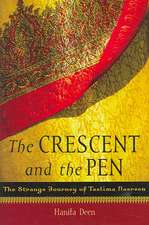Women Directors: The Emergence of a New Cinema
Autor Barbara Koenig Quart, Leonard Quarten Limba Engleză Paperback – 30 noi 1989
Quart here extends her previous writings on what she terms the best narrative cinema: women-centered cinema' and feminist filmmaking. Quart addresses American, Western European, and Eastern European directors, closing with Third World examples. Arguing that independent filmmaking best serves the quest for a woman's voice and vision, Quart chronicles the survival of women directors. She traces a heritage of women directors inside the Hollywood system and beyond. . . . This excellent study . . . is] recommended for undergraduates in film and women's studies. "Choice"
The current level of activity among women directors is unequalled in the history of feature films. This unprecedented study examines major contemporary women directors of narrative feature film--their themes, their art, and the circumstances under which they work. Quart contends that women are creating a film language and film sensibility that are unique, strong, and--until now--unexplored. Her discussion centers on the ties between women directors, rather than on a survey of women who direct films. Beginning with the antecedents to today's burgeoning number of women directors, the study progresses to American women directors. Subsequent chapters focus on womenn directors in Western Europe and Eastern Europe, with some attention as well to Asia and Latin America.
Preț: 238.73 lei
Preț vechi: 306.30 lei
-22% Nou
45.69€ • 47.52$ • 37.72£
Carte disponibilă
Livrare economică 25 martie-08 aprilie
Specificații
ISBN-10: 0275934772
Pagini: 284
Dimensiuni: 158 x 229 x 20 mm
Greutate: 0.41 kg
Editura: Praeger
Descriere
The current level of activity among women directors is unequalled in the history of feature films. This unprecedented study examines major contemporary women directors of narrative feature film--their themes, their art, and the circumstances under which they work. Quart contends that women are creating a film language and film sensibility that are unique, strong, and--until now--unexplored. Her discussion centers on the ties between women directors, rather than on a survey of women who direct films. Beginning with the antecedents to today's burgeoning number of women directors, the study progresses to American women directors. Subsequent chapters focus on womenn directors in Western Europe and Eastern Europe, with some attention as well to Asia and Latin America.

























